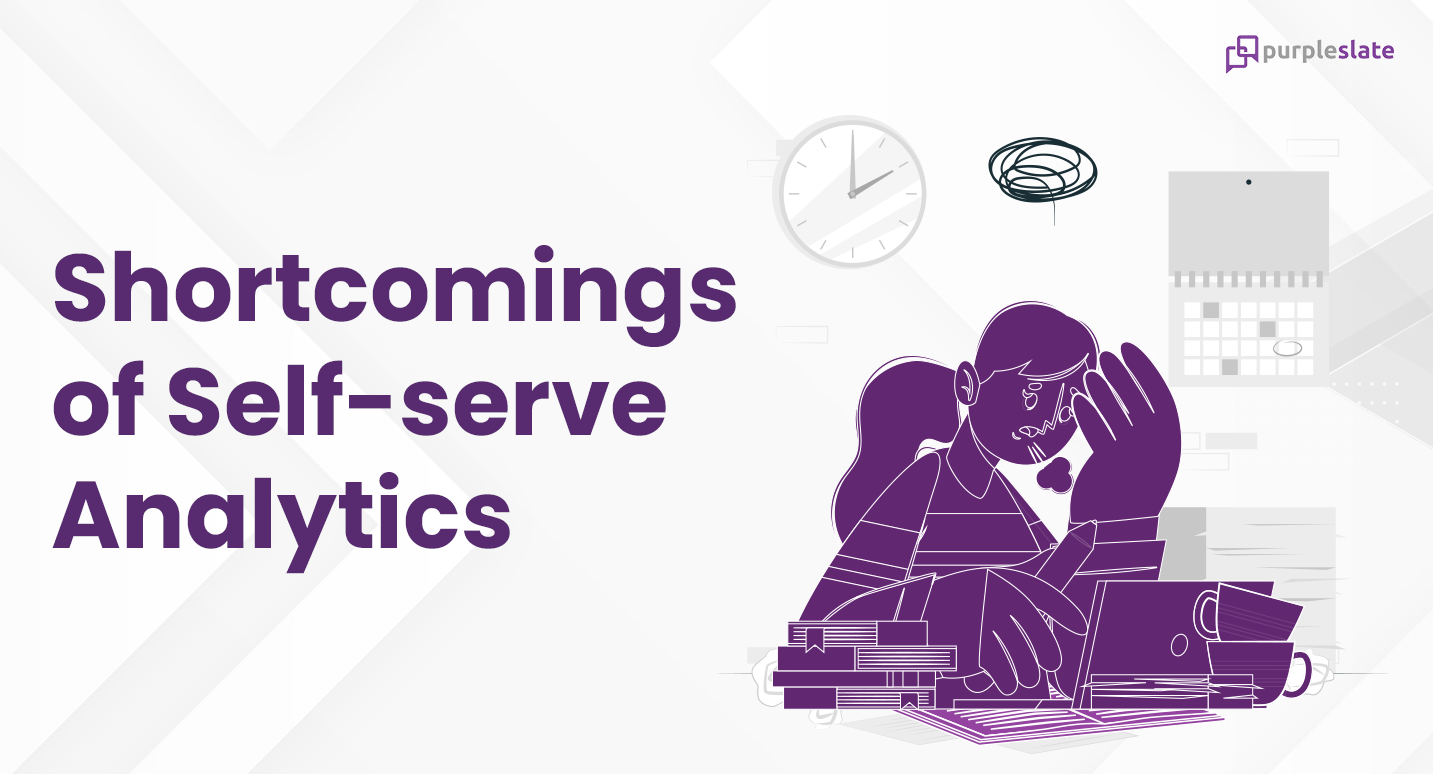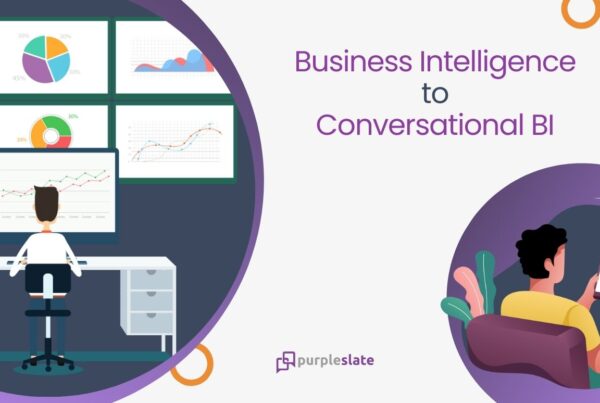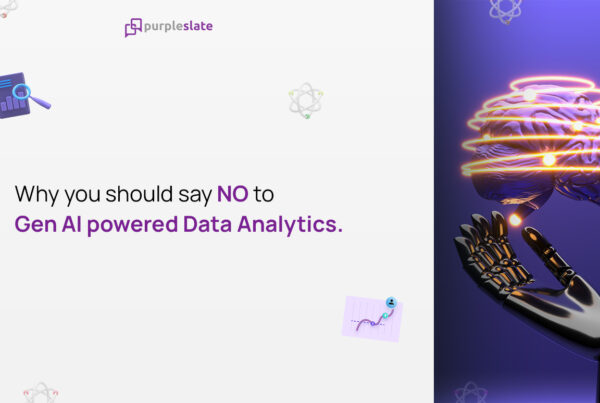
Introduction
In today’s data-driven world, organizations have access to vast amounts of data. This data can be used to gain valuable insights into business operations, customer behavior, and industry trends. However, not all business users have the technical expertise to work with data or create meaningful visualizations. This is where self-serve analytics tools come into play. Self-serve analytics tools enable business users to explore data, create visualizations, and gain insights without needing to rely on IT or technical experts.
What is Self-Serve Analytics?
Self-serve analytics in its truest sense refers to the process of business users exploring data and creating visualizations independently, without requiring technical expertise or assistance from IT. In a utopian world, self-serve analytics tools provide users with a user-friendly interface that allows them to drag and drop data sets, apply filters, and create visualizations quickly and easily. These tools help business users gain insights into data, without the need for technical expertise.
However, the definition touted above is an ideal condition. The reality is far different and to understand more about the shortcomings of self-serve analytics one needs to understand the history of the same.
A Brief History of Self-Serve Analytics
The self-service BI market size was valued at $4.73 billion in 2018 and is projected to reach $14.19 billion by 2026, growing at a CAGR of 14.8% from 2019 to 2026 – Allied Research
The history of self-serve analytics is not limited to the last decade as many might imagine. It started way back in the 1980s and it has evolved based on a lot of factors, leading to the complex business intelligence tools we are left with today. However, its beginnings were with one of the most used spreadsheet applications. Let’s break it into three important eras for both self-serve data analytics and computing capabilities.
The 1980s to 1990s – The Humble yet Powerful Spreadsheet
The inception of self-serve analytics began in the 1980s when spreadsheet software, such as Lotus 1-2-3 and Microsoft Excel, became widely available. These spreadsheet applications enabled business users to manipulate data and create simple visualizations without requiring technical expertise. Microsoft Excel had over 30 million active users by 1996, just 11 years after it was launched. However, they were not the perfect data analytics solution. The limitations of spreadsheet software became apparent as data sets grew more complex, leading to the development of more robust data visualization tools.
The 1990s to 2000s – The Era of Sophistication
In the 1990s, data visualization tools such as Tableau and QlikView emerged, allowing business users to create more complex visualizations and gain insights into large data sets. More sophistication entered into the foray as these tools required significant technical expertise to use effectively, limiting their access to a few business users. These drove a sense of simplifying information access and thus led to the next era in self-serve analytics.
The 2000s to Present – More Players in the Market
In the early 2000s, self-serve analytics tools such as SAP Lumira, IBM Cognos Analytics, and Oracle BI Cloud Service emerged, providing business users with user-friendly interfaces and easy-to-use data visualization tools. These tools made it easier for business users to explore data, create visualizations, and gain insights. The query languages were still required but the user interfaces had been simplified for most to access, but the real question remained. Was it simple? Can anyone without any form of technical training access data insights?
4 Roadblocks of Self-Serve Analytics
While the self-service aspect of modern BI platforms offers more freedom and power to business users, it doesn’t remove the responsibility of organizations to manage and maintain these analytics systems over time – Forbes
Self-serve analytics tools offer many benefits, but they also have several shortcomings that organizations should be aware of before implementing them.
Limited User Friendliness
While self-serve analytics tools were great for creating simple charts and graphs, they are not as well-suited for more complex analyses which require additional help. Users struggled to generate insights from large datasets or perform complex statistical analyses without significant technical expertise. As a result, organizations needed to invest in additional training or hire other staff to bridge these analytical gaps.
Organizations provided training to their business users to help them understand the limitations of self-serve analytics tools and how to leverage more advanced analytics techniques when needed. As the size of data sets grew, organizations hired specialized teams of data analysts or data scientists to assist with more complex analyses thereby still limiting access to a select few.
Limited Quality Control
Self-serve analytics tools are only as good as the data they have access to. If the data is incomplete, inaccurate, or inconsistent, the insights generated by the tool will be similarly flawed. Additionally, self-serve analytics tools do not have the same level of quality control as more robust data management systems, which can lead to data integrity issues.
Organizations started to establish data governance policies and procedures to overcome this limitation to ensure data quality and consistency. This included implementing data profiling tools, data cleansing tools, and data validation procedures to ensure the accuracy and consistency of the data. These tools added to the licensing cost of self-serve tools thereby increasing the Total Cost of Ownership for maintaining and if required upgrading the current suite of self-serve analytics tools.
Limited Customization Abilities
Self-serve analytics tools typically have limited customization options. Users are often constrained by pre-built templates and dashboards, which can limit their ability to create bespoke insights that meet their specific needs. While these tools are designed to be user-friendly and easy to use, they may not provide the same level of customization and flexibility as more advanced analytics tools.
Organizations continuously evaluated their self-serve analytics tools to determine the level of customizations they offer. If the tools did not meet the organization’s specific needs, they invested in more advanced analytics tools or developed custom solutions which became a large project of their own volition. Building customizations on pre-existing tools became a long drawn-out implementation process thereby critically delaying data access.
Limited Security Protocols
Self-serve analytics tools can create security risks for organizations in specific cases where Business users may access sensitive data without proper security controls. Some of the tools lack role-based access control or do not limit certain features for data security. This led to data breaches or other security incidents, creating additional risks for organizations.
Organizations established security controls and policies around self service analytics tools. This included implementing access controls, encryption, and other security measures to protect sensitive data. However, this became a continuous manual effort eating into the productive time of data scientists, data analysts, functional managers, and more. Furthermore, it was always impossible to achieve 100% effectiveness as humans had the proclivity to commit errors ultimately affecting the credibility of the brand.
Is there a better solution to these four great limitations apart from the technical complexities revolving around current self-serve analytics tools?
The Next Step for Self-Serve Analytics – Conversational Insights
Self-serve analytics tools have revolutionized how organizations analyze and visualize data, empowering business users with insights into their operations, customers, and industry trends. However, these tools have several limitations that organizations need to be aware of before implementing them. Overcoming these limitations becomes a DIY project that extends well beyond accepted timelines and what’s more? It still doesn’t necessarily solve the core issue of self-serve analytics – where anybody can access data insights.
Here’s where conversational insights come into the picture. Apart from democratizing data access with a language-driven interface, it offers more customizations with momentary answers and has better security protocols through role-based access controls and more. Check out how conversational insights is the next step for self-serve analytics.




